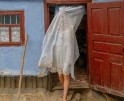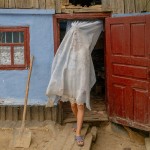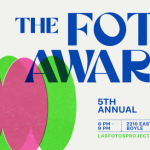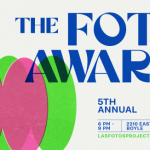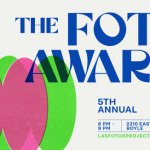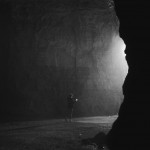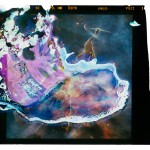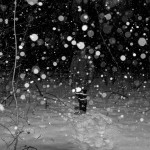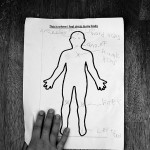2022 Hearst Journalism Awards: Alberto Mariani: 2022 Third Place Photojournalism Winner
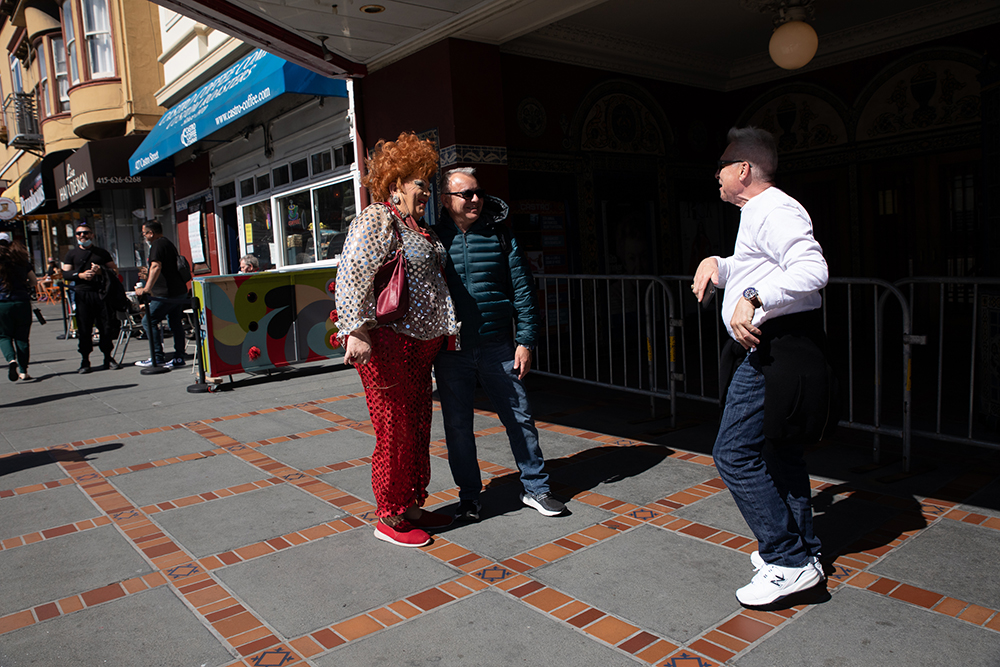
©Alberto Mariani, Olivia, who is a senior member of the Hot Boxxx Girls crew, stops to talk with some passersby in the Castro district who recognize her from one of her shows at Aunt Charlie’s and other venues in San Francisco on Saturday afternoon, May 21, 2022. Over the years, she has become known in the community partly because of her performances and in part for her extensive fundraising work supporting the LGBTQ community.
This week we are celebrating photographers who have received a 2022 Hearst National Championship Award. Today we focus on National Photojournalism Championship Third Place Winner, Alberto Mariani from Arizona State University, who received a $5000 scholarship. The Hearst Story Prompt was “Individual expression and the California Dream.”
The Hearst Championships are the culmination of the 2021 – 2022 Journalism Awards Program, which were held in 103 member universities of the Association of Schools of Journalism and Mass Communication with accredited undergraduate journalism programs. From May 20 – 25, 2022, 29 finalists – winners from the 14 monthly competitions – participated in the 62nd annual Hearst Championships in San Francisco where they demonstrated their writing, photography, audio, television and multimedia skills in spot assignments. The assignments were chosen by media professionals who judged the finalists’ work throughout the year and at the Championships.
Alberto Mariani is an Italian photographer living in Phoenix, Arizona, whose images explore social and political issues. He has worked as a staff photographer focusing on health disparities across the Southwest region for Cronkite News Arizona PBS. He is now a freelance contributor to Shutterstock photo agency and is available for assignments across the Southwest.
Follow Alberto Mariani on Instagram @albe_mariani
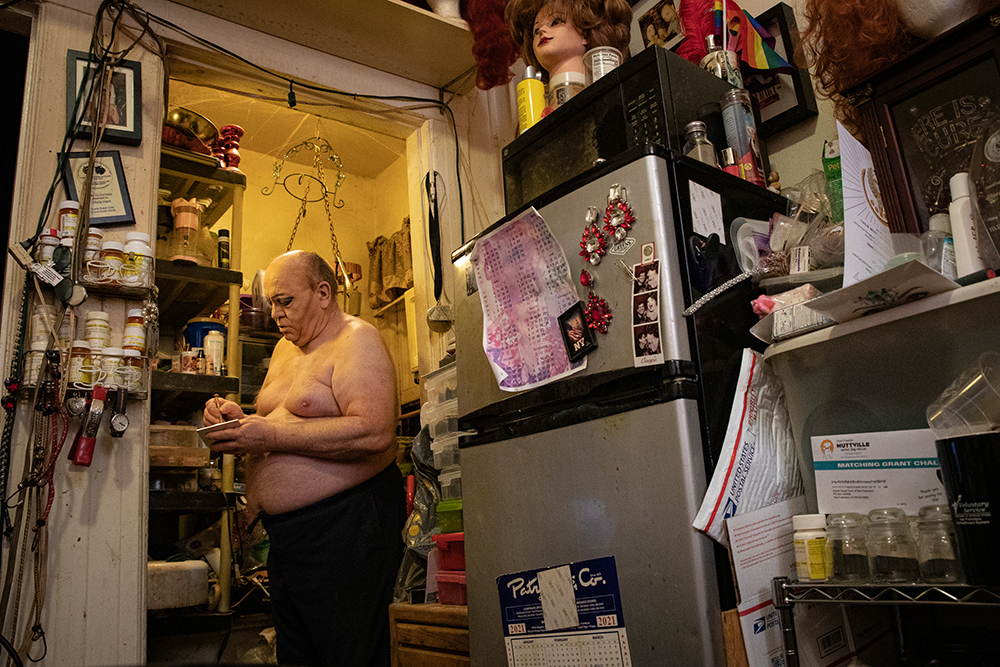
©Alberto Mariani, Olivia Hart, also known as Frank, applies some light makeup on her face at her apartment in San Francisco in preparation for a charity event in the Castro district on Saturday, May 21, 2022. Frank started dressing up when he was four years old but began his career as a performer in his late 30s after coming out to his family and leaving his wife. When dressed up as Olivia, Frank adopts a female identity while acknowledging, “I am not a female illusionist, I am a drag queen, still a man in a dress.”
Story Summary
Since 1987, the drag crew at Aunt Charlie’s Lounge has entertained San Franciscans with lustrous, boasting performances set to the tune of classic hits and more recent pop songs.
Fervent support from locals and curious visitors allowed Aunt Charlie’s to withstand cultural and economic pressures that pushed many other businesses aside throughout the years. As the last remaining gay dive bar in the Tenderloin, it stands out as one of the few institutions of a bygone era when artists, musicians, immigrants, and LGBTQ individuals flocked to the Tenderloin to live and create in a non-judgmental enclave.
The decision to drag is a personal one, as each performer’s motivation is rooted in individual histories and experiences. But on any given night, the girls from Aunt Charlie’s challenge rigid gender expectations, inevitably advocating for a more inclusive and accepting society.
Today, their stories and performances serve as an act of defiance in the face of legislative assaults in many parts of the country attempting to limit sexual freedoms and gender expressions that do not fit predominant views.
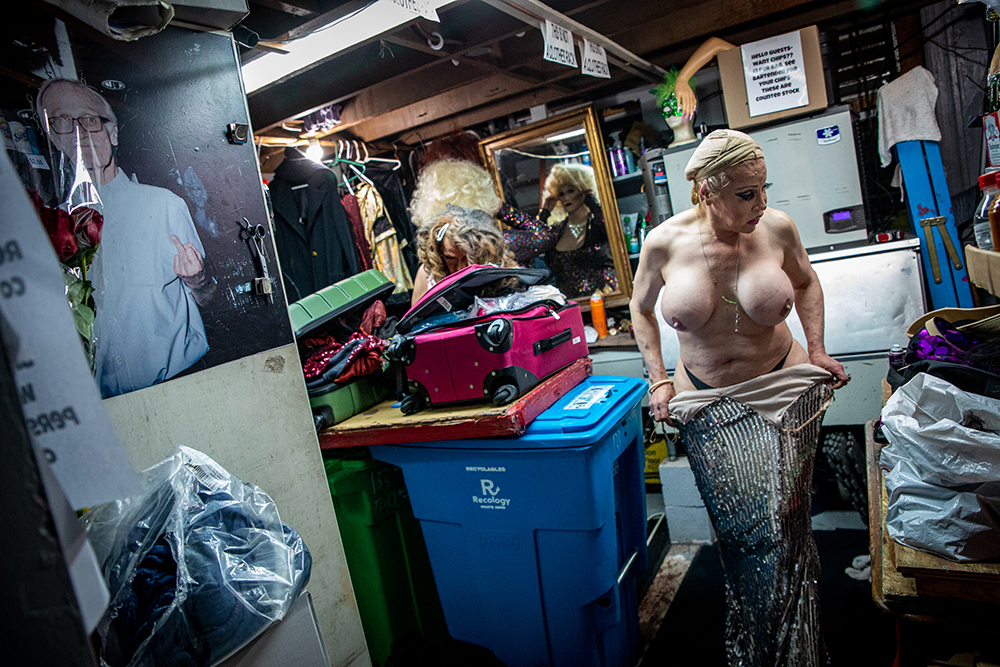
©Alberto Mariani, Carla Gay slips into a tight, glittery cocktail dress in the small crowded dressing room at Aunt Charlie’s before making her first appearance in the Saturday show as the night’s emcee in San Francisco on May 21, 2022. Carla, who is originally from Mexico and moved to California in the late 80s, is known in the drag community as a legend for both her performances and her advocacy for transgender rights. While she began her career as a drag performer in Mexico, she says the culture of “Machismo” that defines the country made it extremely hard for her to pursue this path; moving to California opened possibilities she would otherwise not have had.

©Alberto Mariani, Rahni NothingMore adjusts her wig in the dressing room at Aunt Charlie’s Lounge before making her way on stage in San Francisco on Friday, May 20, 2022.
Judy Walgren: Congratulations on your huge accomplishment in the Hearst Journalism Awards. I believe you placed third in Photojournalism. Can you tell us a bit about yourself, where you are from, where you go to school and how you got into photography?
Alberto Mariani: I am originally from Milan, Italy, and my family moved to the States when I was 15 or 16. We moved to North Carolina, where I did two years of high school. Then I took a year off from school and traveled a little bit and then got back into academics. But after a little while, I dropped out to pursue a career as a chef and worked in that industry for about six years, as a cook and then a baker in New York.
In between work, I would carry a camera and would just try and photograph in the street.
I was always a very politically minded person, so with all the turmoil here in the US and around the globe, I thought this was a great way to explore that interest, and also to communicate in a way that I struggle with in writing, or even speaking. I feel that photography is an open way of communicating what I see as important. That’s how I got it into photography. I enrolled in a community college in New York, then transferred to Arizona State a couple of years ago to continue my studies, although there’s not much of a photography program here.
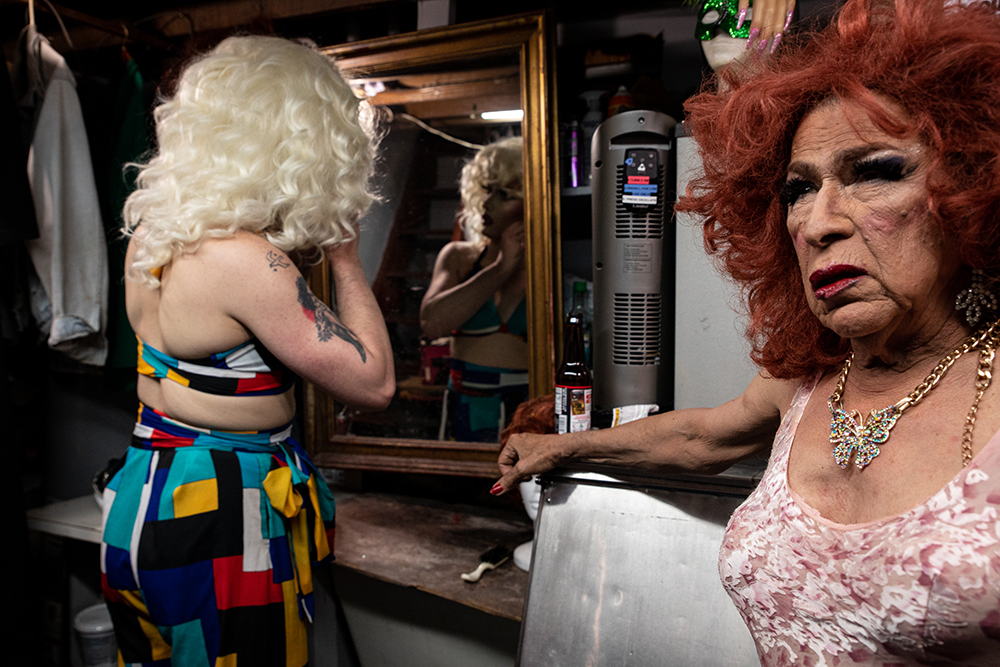
©Alberto Mariani, onna Personna, right, takes a break in the dressing room in between sets at Aunt Charlie’s Lounge in San Francisco on Friday, May 20, 2022. While at 75, she is one of the oldest drag in town, she began her career only in her late 50s. Today, she has performed in over a hundred venues across the country, including the prestigious Lincoln Center in New York City; she has starred in three movies and has lectured university students about the history of the transgender movement and drag. “I used to have massive stage fright,” she says as she points out the empowering feeling she gets from performing today.
Judy: With the emphasis on visuals for news through social media, it seems like all journalism schools need to get their programs aligned with the visual aspect of the news. The main way people are ingesting news is visual.
Alberto: Yeah. I think that because a lot of newsrooms for a number of years have been implementing more and more video more often, now the emphasis in some journalism schools is on video production and not still photography
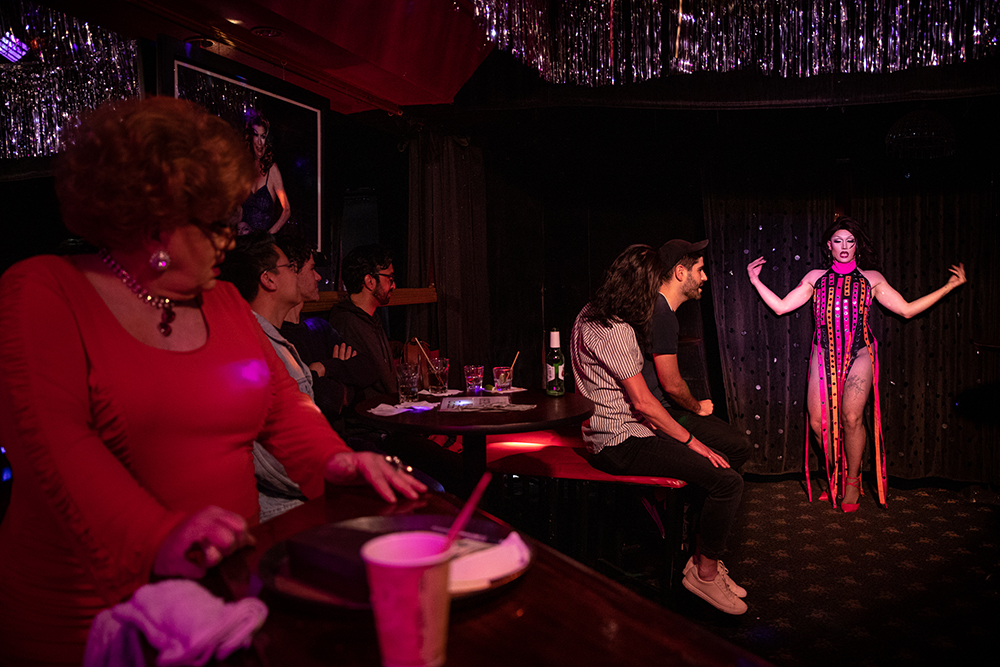
©Alberto Mariani, Mary, right, performs her first set of the night in a dress she sewed herself at Aunt Charlie’s Lounge in San Francisco on Friday, May 20, 2022. On Fridays and Saturdays, when the Hot Boxxx Girls are set to play, the bar is often fully booked days in advance due to the crew’s popularity with both locals and visitors.
Judy: It’s frustrating for me because the foundation for visual storytelling is the still photograph, so it seems that they are skipping a crucial step. So how have you been able to figure out your pathway for photojournalism, then, if your program does not really have a lot of classes in that area?
Alberto: Juan Arrendondo has been a great mentor for me. I don’t come from a family of journalists or creative people, and I don’t have a lot of contacts in photojournalism in the United States. I am 25 and am much older than the normal undergraduate student. And I am coming to journalism later in my life. I have a lot of catching up to do. So, through Juan, I am learning how to get in touch with editors, what I need to do, like apply to the Eddie Adams workshop, and all this stuff. I think that universities are not doing a good job at explaining how to progress as a journalist, other than telling us that you need to get an internship—especially for someone who wants to freelance. A mentor can guide you through the motions. And it’s always helpful to have someone with experience look at your work with a critical eye and say, “Hey, this photo doesn’t work because of…” and then explain why it doesn’t work.
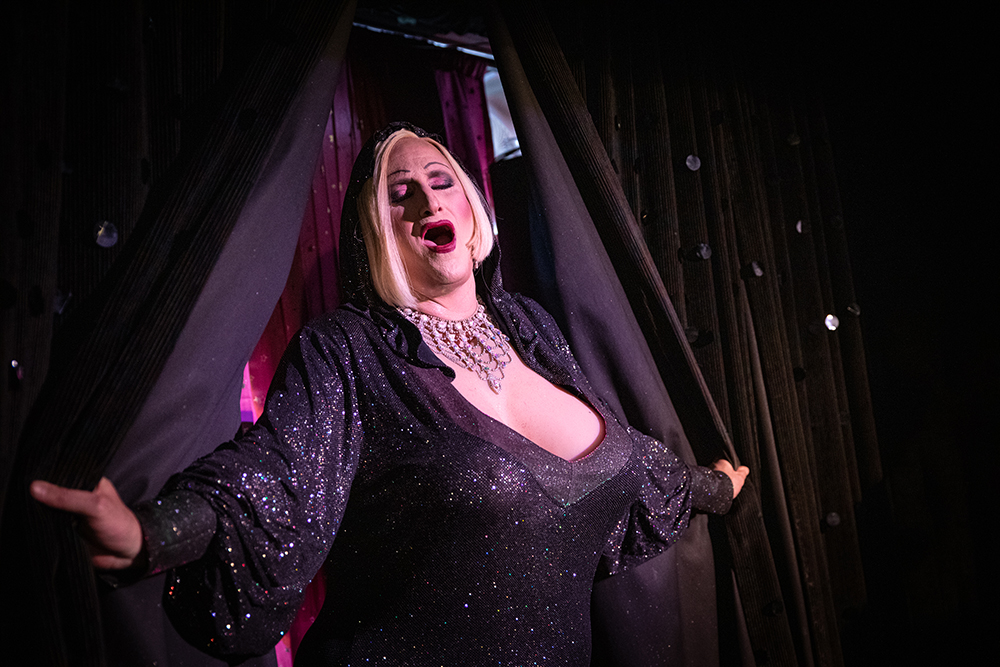
©Alberto Mariani, heena Rose makes her second appearance of the night at Aunt Charlie’s Lounge in San Francisco on Saturday, May 21, 2022. Sheena has dressed up for over 17 years, mostly at weekend shows such as those with the Hot Boxxx Girls crew. “Before drag, I was shy and guarded about what other people thought of me,” she says “today, I am much more confident and comfortable with who I am.”
Judy: Do you think coming to photojournalism a bit later, with more lived experiences and maturity has helped you?
Alberto: I think it gives me a little bit more perspective about the people I photograph and spend time with. I see a lot of younger journalists, especially maybe in the first few years, who are kind of scared of approaching people, rather than just being intrigued by people. They think they are supposed to “tell” their stories as subjects rather than as just human beings. They’re trying to extrapolate information and they don’t see—at least that’s my perspective of some younger journalists—they don’t see the value in connecting with another person outside of their goal of getting that information for a report.
And then, maybe because I’m not originally from the US and I’ve traveled a little bit, I see some aspects with a very different mindset.
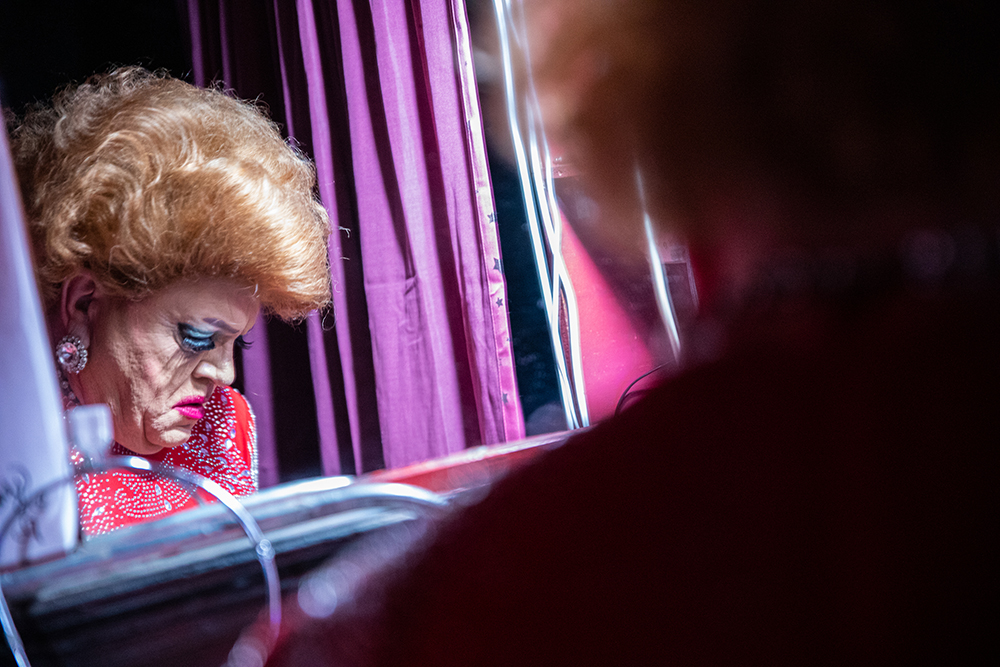
©Alberto Mariani, Olivia Hart changes the playlist for the upcoming performer in the back of Aunt Charlie’s Lounge in San Francisco on Friday night, May 20, 2022. Each member of the drag crew prepares a separate playlist ranging from old hits to more recent pop songs.
Judy: I am sure you have a more global mindset than most students your age in the US. You have connected with different cultures around the world, and people from the United States are much more insulated, overall.
Alberto: And when you go back to your home country, you can really see a lot of the great things about the United States that don’t exist in other countries, like the different mentalities. It really gives you a different perspective.
Judy: Tell us about the Hearst experience?
Alberto: A lot of the stories I had in mind just fell apart because I couldn’t find access or at least the access that I wanted to have. And so, I found my story on the day before I arrived by calling a bar in the Tenderloin and asking if I could photograph the drag performers there. They told me to just show up at the bar on Friday night and ask the girls myself if they’re okay with that.
The bar is called Aunt Charlie’s. It’s a fascinating place and the topic was on self-expression and the California Dream, so I thought this could be a great way to show that.
After arriving in San Francisco and meeting with the Hearst judges, I went to the bar to chat with the girls and one of them said it was fine to photograph her. So, I spent the night, the next morning and that afternoon photographing the performances and following her around during the day. I went to her apartment. And then I went back to the club the second night because there were different people working. But unfortunately, most of the people working that night were leaving for a conference so I couldn’t really do more with the story.
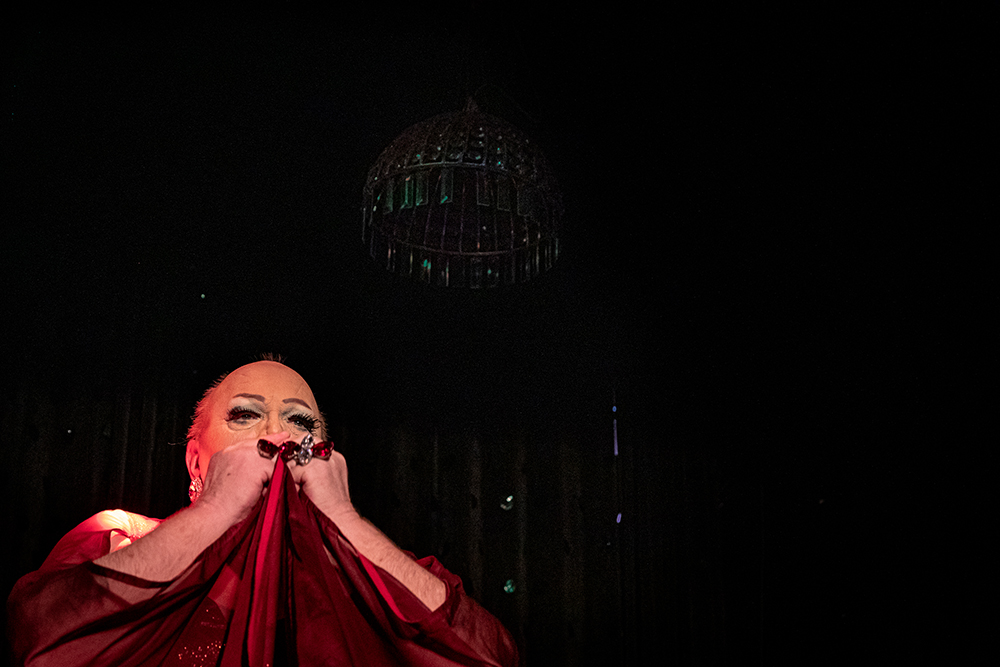
©Alberto Mariani, Olivia Hart thanks a cheering audience for the round of applause at the end of the Friday show on May 20, 2022, after donning her wig to reveal her bald head and her other identity, a ritual she performs each night at Aunt Charlie’s in San Francisco.
Judy: What was your takeaway from your time in San Francisco.
Alberto: It’s a fascinating city and is clearly different than other big cities. It’s more open and you can see it even from the air. It’s open to everybody. I was also struck by the amount of disparities in San Francisco. You have this idea of San Francisco being this conglomerate of innovation and just the history of inclusion and then you see 100’s of people lying on the streets. You see there is a problem. And from a European perspective, yes, we do have problems but definitely you don’t see encampments.
Judy: And then what is your plan after you’re done with your degree?
Alberto: I’m graduating this August and I just started an internship with the Arizona Republic that goes on for 10 weeks. If I’m able to make some connections in the meantime for freelance and assignments in the US, I might decide to stay here otherwise, I’m planning to go to first to the Western Sahara for a story that I’ve been wanting to do for a while. And then possibly Congo.
Thankfully, I have people who I have met who have been very clear about having the right motivations and they align with my goals. I don’t want to be that parachute photographer. I am interested in conflict because I have always been against the portrayal of conflict as a very simple narrative. There are lot of stories that can be told outside of the frontline and bombs – a lot of great photographers like Lindsay Adario – they work in conflict zones but goes into places trying to give a more accurate and comprehensive view of places in conflict which doesn’t mean that you have to be on the front line every day.
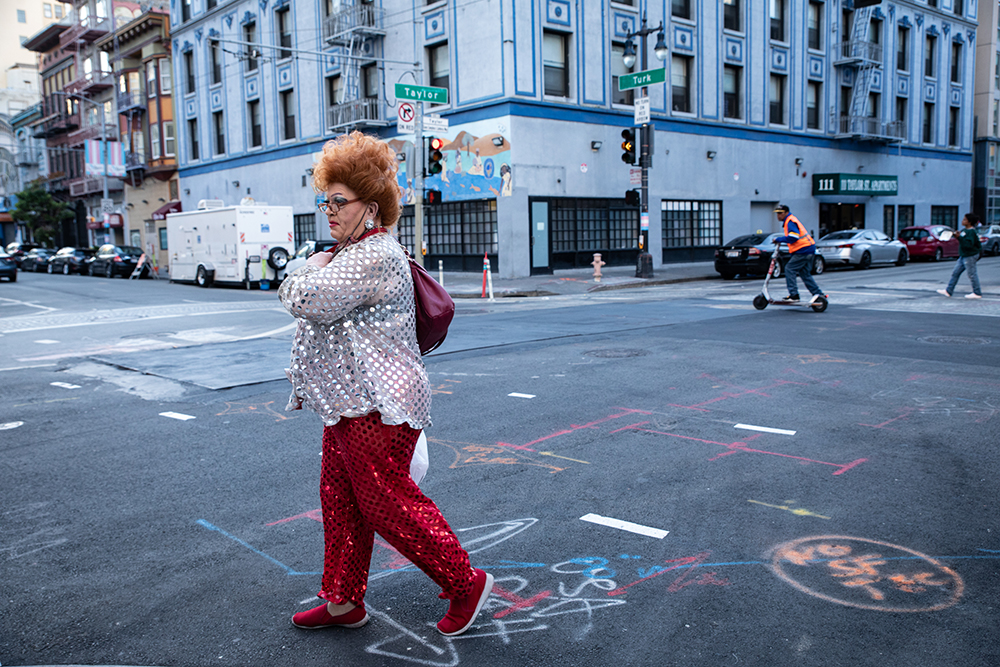
©Alberto Mariani, Olivia Hart walks through the Tenderloin District in San Francisco on her way to work as some heads turn to look at her figure on Saturday, May 21, 2022. Aunt Charlie’s stands out as the last gay bar in the Tenderloin, a neighborhood that once was a cultural hub of the LGBTQ community in the city but has recently witnessed widespread gentrification driven by the flourishing of the tech industry in town.
Judy: How do your parents feel about your interest in photojournalism?
Alberto: They’ve accepted it. My parents have always known that I was not going to pursue a sedentary life with a home and a family and a picket fence. And I think that they know that I couldn’t survive in that kind of setting or environment and that it would drive me crazy.
Judy: Arizona is lucky to have you. I hope they know that! I wish my friend Nick Oza was still alive and you could spend time together…
MSU J-School Associate Director and Professor of Practice Judy Walgren is an award-winning photographic artist, teacher, photo editor, curator and writer. received her MFA in Visual Art from the Vermont College of Fine Art in January 2016 where she began her exploration into the disruption of historic visual archives. From 2010 to 2015, she was the Director of Photography at the San Francisco Chronicle, where she managed a staff of visual content producers, photo editors and pre-press imagers for print and digital platforms. During her tenure at the Chronicle, her team won multiple Emmy Awards for their multimedia pieces and they earned Photo Editing Team of the Year from Best of Photojournalism. She has also worked for the Denver Post, The Rocky Mountain News and the Dallas Morning News. Walgren received a Pulitzer Prize for International Reporting with a team from the Morning New for their series dealing with violent human rights against women. She lives in San Francisco.
Follow Judy Walgren on Instagram: @judywalgren
Posts on Lenscratch may not be reproduced without the permission of the Lenscratch staff and the photographer.
Recommended
-
The International Women in Photo Association Awards: Lorraine Turci: The Resilience of the CrowMarch 16th, 2024
-
The International Women in Photo Awards: Natalia Garbu: Moldova LookbookMarch 15th, 2024
-
The International Women in Photo Association Awards: Rayito Flores Pelcastre: Chirping of CricketsMarch 14th, 2024
-
The International Women in Photo Association Awards: Alena Grom: Stolen SpringMarch 13th, 2024
-
The International Women in Photo Association Awards: Louise Amelie: What Does Migration Mean for those who Stay BehindMarch 12th, 2024


